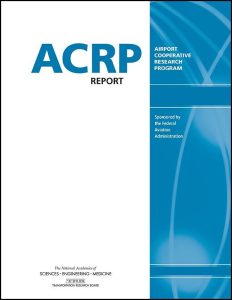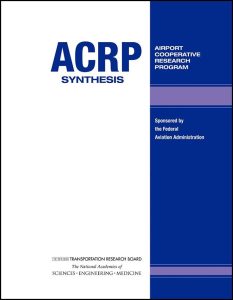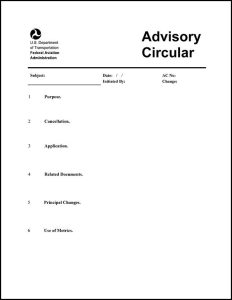To narrow the library of airside resources, use the filter boxes or airport map below or search box above.
Click an item below to expand.
Resources Matching Your Search
2021
This resource is a webpage that provides information on the Electronic Code of Federal Regulations (e-CFR) Title 49, Subtitle B, Chapter XII, Subchapter C, Part 1549, which applies to each facility applying for or certified by TSA as a certified cargo screening facility to screen cargo.
2015
ACRP Report 143 discusses various issues that must be addressed in planning air cargo facilities. The guidebook explores tools and techniques for sizing facilities, including data and updated metrics for forecasting future facility requirements as a function of changing market and economic conditions. The procedures offered may help airport operators develop effective business plans and make decisions that meet the industry’s current and future technological, operational, and security challenges in a cost-effective, efficient, and environmentally sensitive manner. The guidebook also includes a CD-ROM, which contains the Air Cargo Facility Planning Model in a spreadsheet format. The model includes procedures for planning, developing, and implementing air cargo facilities that can be adapted and applied by users to reflect local requirements.
2011
ACRP Synthesis 29 addresses the current state of ground-handling practices, focusing on safety measures and training. Issues addressed in the report include ramp safety operations, staff roles and responsibilities, safety training, audit and inspection programs, safety violation programs, and collaborative safety initiatives, such as foreign object debris programs.
2019
The Air Cargo Guide consists of ten chapters covering a range of important cargo issues confronting airports today. In several chapters there is an overlap of similar issues in order to address important topics from different perspectives. This is consistent with the intent of the original document—to provide airports with an understanding of different strategic issues fundamental to air cargo, with which the reader may not have had previous experience. The Guide is not intended to provide all of the answers; rather it has been written to help users develop the right questions.
2015
This advisory circular (AC) provides operators with recommended procedures for managing cargo operations. Developing and using these comprehensive procedures is key to establishing a safe and efficient cargo operation. The AC provides guidance for aircraft cargo loading systems (CLS), restraints, special cargo, and unit load devices (ULD). This AC is not mandatory and does not constitute a regulation. This AC describes an acceptable means, but not the only means, of complying with applicable regulations to manage cargo operations.
2015
ACRP Web-Only Document 24 reviews the process and information used in preparing ACRP Report 143. ACRP Report 143 explores the tools and techniques for sizing air cargo facilities, including data and updated metrics for forecasting future facility requirements as a function of changing market and economic conditions.
2019
ACRP Synthesis 97 explores the concept of upgauging, which is an airline industry technique enabling air carriers to increase capacity by adding seats to existing jets and replacing smaller planes with larger ones. While these practices are generally the result of airline network and systemwide strategies, their impacts are often experienced at the local level by the airport community. This report takes into account the principal drivers and techniques of upgauging from airline and airport perspectives. This study is based on information acquired through a literature review, survey results from 18 airports participating in the study that experienced major variations in passenger enplanements over the previous five to 10 years, and interviews with representatives of five airports and four state transportation agencies.
2021
This manual contains all the industry-approved policies and standards that support safe and efficient ground operations above and below the wing. It is a complementary manual to the IATA Ground Operations Manual (IGOM). This resource is available from the IATA store for $600 to $1,150, depending on the format. It is also available as a floating license.
2021
Unit Load Devices (ULDs) are the air freight version of shipping containers. While their size is standard, the methods of ULD handling, storage, and transport and not. As a result, ULDs are also the leading cause of aircraft damage on the ground. To help reduce the $400M annual repair bill and knock-on effects of cancellations and delays, IATA put together a set of handling regulations, specifically for ULDs. This resource covers technical and operational responsibilities, airline requirements, and design and manufacturing specifications.
2018
This webinar explored the tools and techniques for sizing air cargo facilities, which includes data and updated metrics for forecasting future facility requirements as a function of changing market and economic conditions. The presenters focused on practices regarding air cargo facility-related truck trip generation rates. They discussed what planners may use to identify possible information, data sources, and options when researching truck trip generation. The webinar featured research from the ACRP Report 143 and ACRP Synthesis 80.







